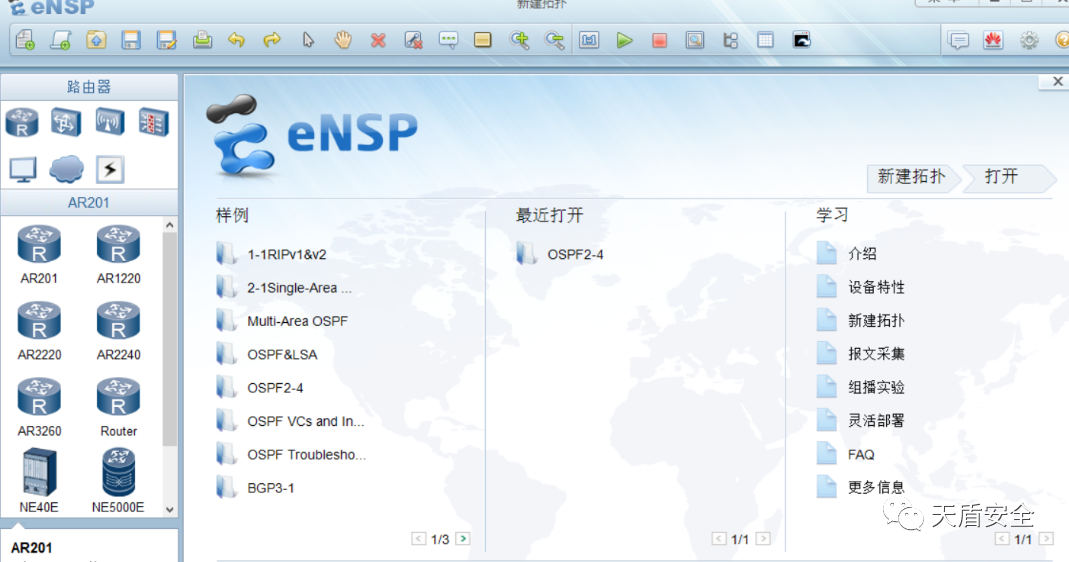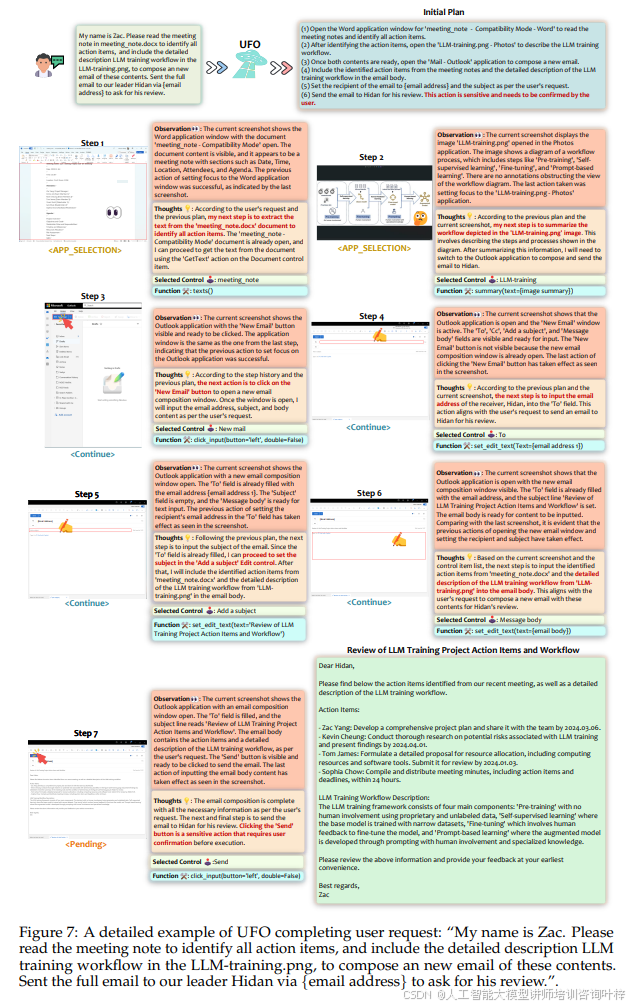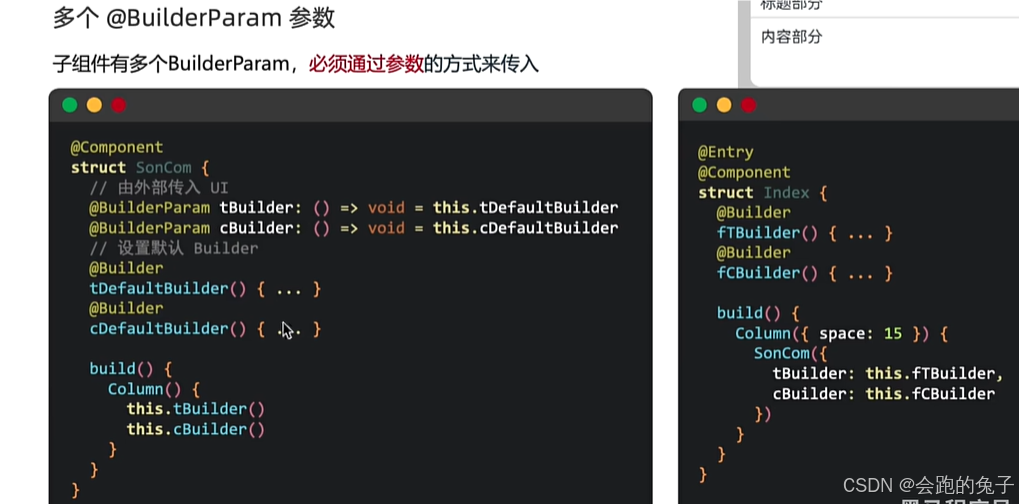一、本文介绍
PDF地址:https://arxiv.org/pdf/2405.16605v1
代码地址:GitHub - LeapLabTHU/MLLA: Official repository of MLLA
Demystify Mamba in Vision: A Linear AttentionPerspective一文中引入Baseline Mamba,指明Mamba在处理各种高分辨率图像的视觉任务有着很好的效率。发现了强大的Mamba和线性注意力Transformer( linear attention Transformer)非常相似,然后就分析了两者之间的异同。将Mamba模型重述为linear attention Transformer的变体,并且主要有六大差异,分别是:input gate, forget gate,shortcut, no attention normalization, single-head, and modified block design。作者对每个设计都细致的分析了优缺点,评估了性能,最终发现forget gate和block design是Mamba这么给力的主要贡献点。基于以上发现,作者提出了一个类似mamba的线性注意力模型,Mamba-Like Linear Attention (MLLA) ,相当于取其精华,去其糟粕,把mamba两个最为关键的优点设计结合到线性注意力模型当中,具有可并行计算和快速推理的特点。本文将结合YOlOV8检测模型通过添加MLLA模块提升检测精度。
二、宏观架构设计

线性注意 Transformer 模型通常采用图 (a) 中的设计,它由线性注意力模块和 MLP 模块组成。相比之下,Mamba 通过结合 H3和 Gated Attention这两个设计来改进,得到如图 (b) 所示的架构。改进的 Mamba Block 集成了多种操作,例如选择性 SSM、深度卷积、线性映射、激活函数、门控机制等,并且往往比传统的 Transformer 设计更有效。
MLLA (Mamba-Like Linear Attention)的则是通过将Mamba模型的一些核心设计融入线性注意力机制,从而提升模型的性能。具体来说,MLLA主要整合了Mamba中的"忘记门”(forget gate9)和模块设计(block design)这两个关键因素,这些因素被认为是Mamba成功的主要原因。
以下是对MLLA原理的详细分析:
1.忘记门(Forget Gate)
1.忘记门提供了局部偏差和位置信息。所有的忘记门元素严格限制在0到1之间,这意味着模型在接收到当前输入后会持续衰减失前的隐藏状态。这种特性确保了模型对输入序列的顺序敏感。
2.忘记门的局部偏差和位置信息对于图像处理任务来说非常重要,尽管引入忘记门会导致计算需要采用递归的形式,从而降低并行计算的效率。
2.模块设计(Block Design)
1.Mamba的模块设计在保持相似的浮点运算次数(FLOPS)的同时,通过替换注意力子模块为线性注意力来提升性能。结果表明,采用这种模块设计能够显著提高模型的表现。
3.线性注意力的改进:
1.线性注意力被重新设计以整合忘记门和模块设计,这种改进后的模型被称为MLLA。实验结果显示,MLLA在图像分类和高分辨率密集预测任务中均优于各种视觉Mamba模型
4.并行计算和快速推理速度:
1.MLLA通过使用位置编码(ROPE)来替代忘记门,从而在保持并行计算和快速推理速度的同时,提供必要的位置信息。这使得MLLA在处理非自回归的视觉任务时更加有效
结合yolov8改进
核心代码
import torch
import torch.nn as nn
__all__ = ['MLLAttention']
class Mlp(nn.Module):
def __init__(self, in_features, hidden_features=None, out_features=None, act_layer=nn.GELU, drop=0.):
super().__init__()
out_features = out_features or in_features
hidden_features = hidden_features or in_features
self.fc1 = nn.Linear(in_features, hidden_features)
self.act = act_layer()
self.fc2 = nn.Linear(hidden_features, out_features)
self.drop = nn.Dropout(drop)
def forward(self, x):
x = self.fc1(x)
x = self.act(x)
x = self.drop(x)
x = self.fc2(x)
x = self.drop(x)
return x
class ConvLayer(nn.Module):
def __init__(self, in_channels, out_channels, kernel_size=3, stride=1, padding=0, dilation=1, groups=1,
bias=True, dropout=0, norm=nn.BatchNorm2d, act_func=nn.ReLU):
super(ConvLayer, self).__init__()
self.dropout = nn.Dropout2d(dropout, inplace=False) if dropout > 0 else None
self.conv = nn.Conv2d(
in_channels,
out_channels,
kernel_size=(kernel_size, kernel_size),
stride=(stride, stride),
padding=(padding, padding),
dilation=(dilation, dilation),
groups=groups,
bias=bias,
)
self.norm = norm(num_features=out_channels) if norm else None
self.act = act_func() if act_func else None
def forward(self, x: torch.Tensor) -> torch.Tensor:
if self.dropout is not None:
x = self.dropout(x)
x = self.conv(x)
if self.norm:
x = self.norm(x)
if self.act:
x = self.act(x)
return x
class RoPE(torch.nn.Module):
r"""Rotary Positional Embedding.
"""
def __init__(self, base=10000):
super(RoPE, self).__init__()
self.base = base
def generate_rotations(self, x):
# 获取输入张量的形状
*channel_dims, feature_dim = x.shape[1:-1][0], x.shape[-1]
k_max = feature_dim // (2 * len(channel_dims))
assert feature_dim % k_max == 0, "Feature dimension must be divisible by 2 * k_max"
# 生成角度
theta_ks = 1 / (self.base ** (torch.arange(k_max, dtype=x.dtype, device=x.device) / k_max))
angles = torch.cat([t.unsqueeze(-1) * theta_ks for t in
torch.meshgrid([torch.arange(d, dtype=x.dtype, device=x.device) for d in channel_dims],
indexing='ij')], dim=-1)
# 计算旋转矩阵的实部和虚部
rotations_re = torch.cos(angles).unsqueeze(dim=-1)
rotations_im = torch.sin(angles).unsqueeze(dim=-1)
rotations = torch.cat([rotations_re, rotations_im], dim=-1)
return rotations
def forward(self, x):
# 生成旋转矩阵
rotations = self.generate_rotations(x)
# 将 x 转换为复数形式
x_complex = torch.view_as_complex(x.reshape(*x.shape[:-1], -1, 2))
# 应用旋转矩阵
pe_x = torch.view_as_complex(rotations) * x_complex
# 将结果转换回实数形式并展平最后两个维度
return torch.view_as_real(pe_x).flatten(-2)
class MLLAttention(nn.Module):
r""" Linear Attention with LePE and RoPE.
Args:
dim (int): Number of input channels.
num_heads (int): Number of attention heads.
qkv_bias (bool, optional): If True, add a learnable bias to query, key, value. Default: True
"""
def __init__(self, dim=3, input_resolution=[160, 160], num_heads=4, qkv_bias=True, **kwargs):
super().__init__()
self.dim = dim
self.input_resolution = input_resolution
self.num_heads = num_heads
self.qk = nn.Linear(dim, dim * 2, bias=qkv_bias)
self.elu = nn.ELU()
self.lepe = nn.Conv2d(dim, dim, 3, padding=1, groups=dim)
self.rope = RoPE()
def forward(self, x):
"""
Args:
x: input features with shape of (B, N, C)
"""
x = x.reshape((x.size(0), x.size(2) * x.size(3), x.size(1)))
b, n, c = x.shape
h = int(n ** 0.5)
w = int(n ** 0.5)
# self.rope = RoPE(shape=(h, w, self.dim))
num_heads = self.num_heads
head_dim = c // num_heads
qk = self.qk(x).reshape(b, n, 2, c).permute(2, 0, 1, 3)
q, k, v = qk[0], qk[1], x
# q, k, v: b, n, c
q = self.elu(q) + 1.0
k = self.elu(k) + 1.0
q_rope = self.rope(q.reshape(b, h, w, c)).reshape(b, n, num_heads, head_dim).permute(0, 2, 1, 3)
k_rope = self.rope(k.reshape(b, h, w, c)).reshape(b, n, num_heads, head_dim).permute(0, 2, 1, 3)
q = q.reshape(b, n, num_heads, head_dim).permute(0, 2, 1, 3)
k = k.reshape(b, n, num_heads, head_dim).permute(0, 2, 1, 3)
v = v.reshape(b, n, num_heads, head_dim).permute(0, 2, 1, 3)
z = 1 / (q @ k.mean(dim=-2, keepdim=True).transpose(-2, -1) + 1e-6)
kv = (k_rope.transpose(-2, -1) * (n ** -0.5)) @ (v * (n ** -0.5))
x = q_rope @ kv * z
x = x.transpose(1, 2).reshape(b, n, c)
v = v.transpose(1, 2).reshape(b, h, w, c).permute(0, 3, 1, 2)
x = x + self.lepe(v).permute(0, 2, 3, 1).reshape(b, n, c)
x = x.transpose(2, 1).reshape((b, c, h, w))
return x
def extra_repr(self) -> str:
return f'dim={self.dim}, num_heads={self.num_heads}'
if __name__ == "__main__":
# Generating Sample image
image_size = (1, 64, 160, 160)
image = torch.rand(*image_size)
# Model
model = MLLAttention(64)
out = model(image)
print(out.size())修改一
第一还是建立文件,我们找到如下ultralvtics/n文件夹下建立一个目录名字呢就是'Addmodules文件夹(用群内的文件的话已经有了无需新建)!然后在其内部建立一个新的py文件将核心代码复制粘贴进去即可。

修改二
第二步我们在该目录下创建一个新的py文件名字为' __init__ .py,然后在其内部导入我们的检测头如
下图所示。
 修改三
修改三
第三步我门中到如下文件uitralytics/nn/tasks.py进行导入和注册我们的模块

修改四
按照我的添加在parse model里添加即可。

修改5

修改6 配置yolov8-MLLA.yaml文件
# Ultralytics YOLO 🚀, AGPL-3.0 license
# YOLOv8 object detection model with P3-P5 outputs. For Usage examples see https://docs.ultralytics.com/tasks/detect
# Parameters
nc: 80 # number of classes
scales: # model compound scaling constants, i.e. 'model=yolov8n.yaml' will call yolov8.yaml with scale 'n'
# [depth, width, max_channels]
n: [0.33, 0.25, 1024] # YOLOv8n summary: 225 layers, 3157200 parameters, 3157184 gradients, 8.9 GFLOPs
s: [0.33, 0.50, 1024] # YOLOv8s summary: 225 layers, 11166560 parameters, 11166544 gradients, 28.8 GFLOPs
m: [0.67, 0.75, 768] # YOLOv8m summary: 295 layers, 25902640 parameters, 25902624 gradients, 79.3 GFLOPs
l: [1.00, 1.00, 512] # YOLOv8l summary: 365 layers, 43691520 parameters, 43691504 gradients, 165.7 GFLOPs
x: [1.00, 1.25, 512] # YOLOv8x summary: 365 layers, 68229648 parameters, 68229632 gradients, 258.5 GFLOP
# YOLOv8.0n backbone
backbone:
# [from, repeats, module, args]
- [-1, 1, Conv, [64, 3, 2]] # 0-P1/2
- [-1, 1, Conv, [128, 3, 2]] # 1-P2/4
- [-1, 3, C2f, [128, True]]
- [-1, 1, Conv, [256, 3, 2]] # 3-P3/8
- [-1, 6, C2f, [256, True]]
- [-1, 1, Conv, [512, 3, 2]] # 5-P4/16
- [-1, 6, C2f, [512, True]]
- [-1, 1, Conv, [1024, 3, 2]] # 7-P5/32
- [-1, 3, C2f, [1024, True]]
- [-1, 1, SPPF, [1024, 5]] # 9
# YOLOv8.0n head
head:
- [-1, 1, nn.Upsample, [None, 2, 'nearest']]
- [[-1, 6], 1, Concat, [1]] # cat backbone P4
- [-1, 3, C2f, [512]] # 12
- [-1, 1, nn.Upsample, [None, 2, 'nearest']]
- [[-1, 4], 1, Concat, [1]] # cat backbone P3
- [-1, 3, C2f, [256]] # 15 (P3/8-small)
- [-1, 1, Conv, [256, 3, 2]]
- [[-1, 12], 1, Concat, [1]] # cat head P4
- [-1, 3, C2f, [512]] # 18 (P4/16-medium)
- [-1, 1, Conv, [512, 3, 2]]
- [[-1, 9], 1, Concat, [1]] # cat head P5
- [-1, 3, C2f, [1024]] # 21 (P5/32-large)
- [-1, 1, MLLAttention, []] # 22 (P5/32-large) # 添加在大目标检测层后!
- [[15, 18, 22], 1, Detect, [nc]] # Detect(P3, P4, P5)
7. 训练代码
import warnings warnings.filterwarnings('ignore') from ultralytics import YOLO if __name__ == '__main__': model = YOLO('yolov8-MLLA.yaml') # 如何切换模型版本, 上面的ymal文件可以改为 yolov8s.yaml就是使用的v8s, # 类似某个改进的yaml文件名称为yolov8-XXX.yaml那么如果想使用其它版本就把上面的名称改为yolov8l-XXX.yaml即可(改的是上面YOLO中间的名字不是配置文件的)! # model.load('yolov8n.pt') # 是否加载预训练权重,科研不建议大家加载否则很难提升精度 model.train(data=r"C:\Users\Administrator\PycharmProjects\yolov5-master\yolov5-master\Construction Site Safety.v30-raw-images_latestversion.yolov8\data.yaml", # 如果大家任务是其它的'ultralytics/cfg/default.yaml'找到这里修改task可以改成detect, segment, classify, pose cache=False, imgsz=640, epochs=150, single_cls=False, # 是否是单类别检测 batch=16, close_mosaic=0, workers=0, device='0', optimizer='SGD', # using SGD # resume='runs/train/exp21/weights/last.pt', # 如过想续训就设置last.pt的地址 amp=True, # 如果出现训练损失为Nan可以关闭amp project='runs/train', name='exp', )8.开启训练
专栏推荐
专栏将持续收集整理市场上深度学习的相关项目,旨在为准备从事深度学习工作或相关科研活动的伙伴,储备、提升更多的实际开发经验,每个项目实例都可作为实际开发项目写入简历,且都附带完整的代码与数据集。可通过百度云盘进行获取,实现开箱即用
正在跟新中~
深度学习落地实战_机 _ 长的博客-CSDN博客




















